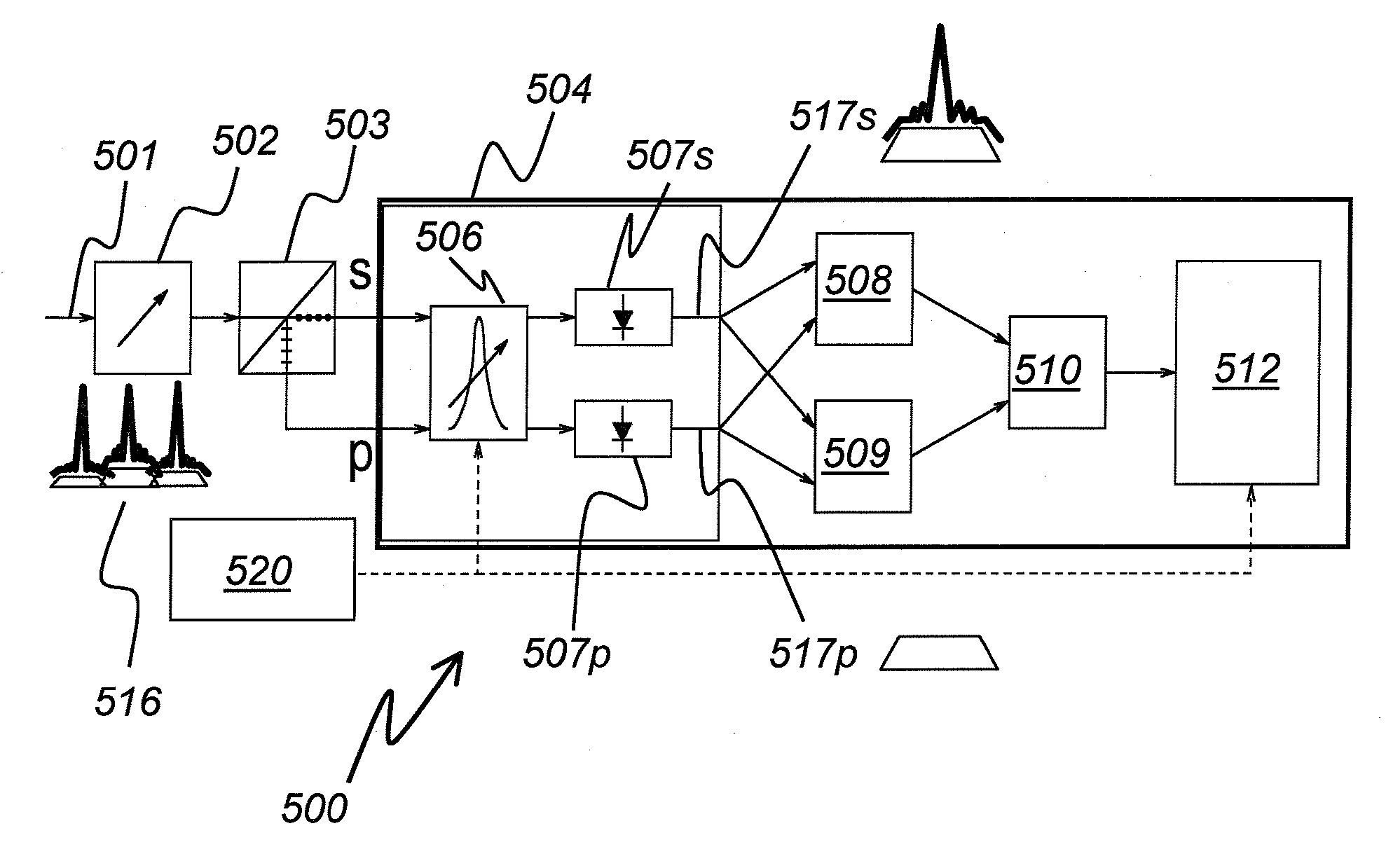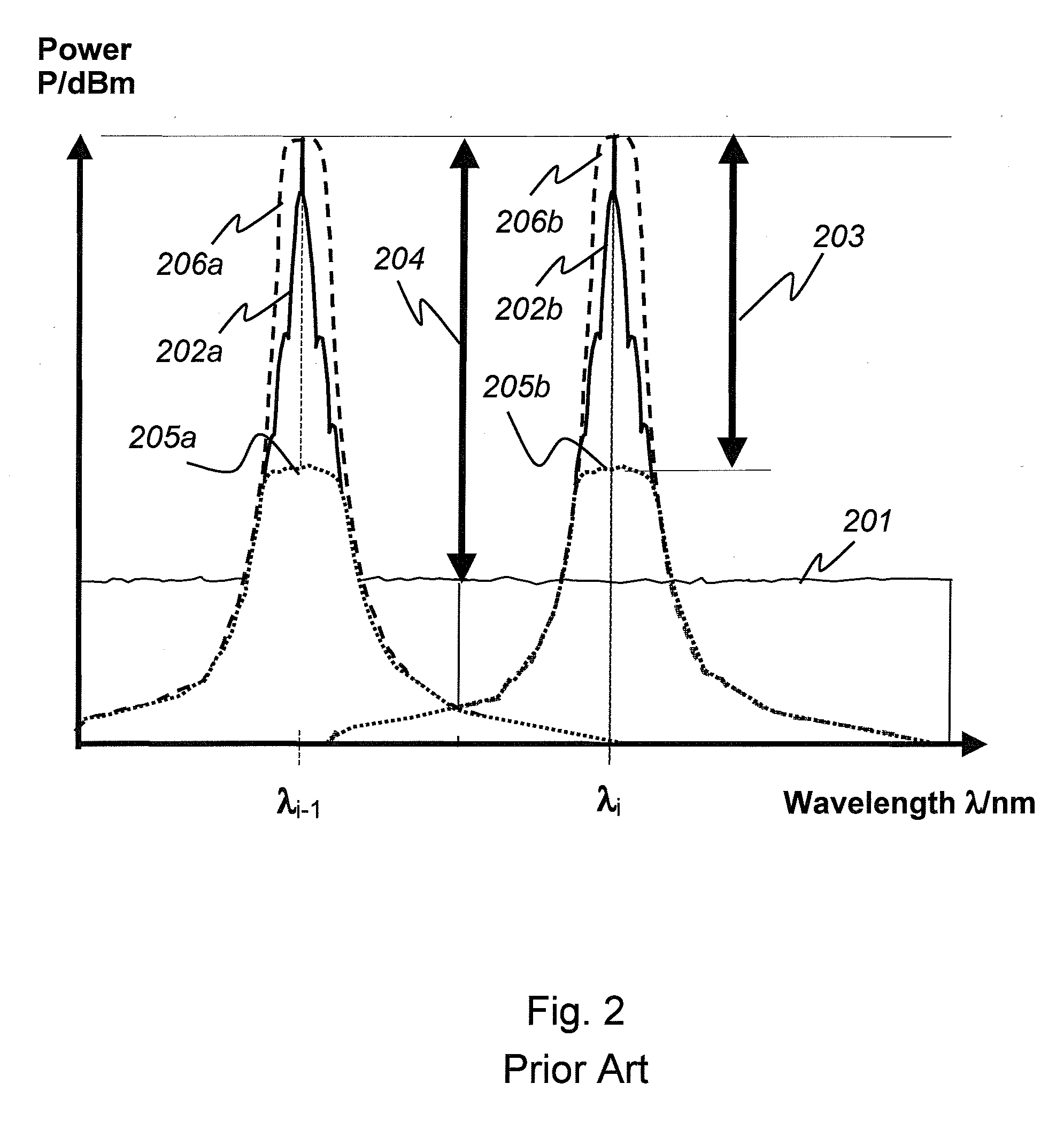OSNR Monitoring Apparatus And Method Using Polarization Splitting
a polarization splitting and monitoring apparatus technology, applied in the field of wavelength division multiplex optical communication systems, can solve the problems of amplifier spontaneous emission, distortion of noise spectrum, and inability to directly access noise power, so as to achieve the effect of improving accuracy and small polarization dependent loss of tunable filters
- Summary
- Abstract
- Description
- Claims
- Application Information
AI Technical Summary
Benefits of technology
Problems solved by technology
Method used
Image
Examples
first embodiment
[0037]A first embodiment is shown in a simplified block diagram in FIG. 4. The in-band OSNR monitor 400 comprises a polarization controller 402 for receiving a WDM signal via input port 401. The polarization controller 402, controlled by a central processing unit (CPU) 420 is capable of varying the polarization orientation of the WDM signal over all polarization orientations.
[0038]From the polarization controller 402 the WDM signal is passed to a polarization filter or splitter 403, where it is divided into two orthogonally polarized WDM signals 431p and 431s. Each of the orthogonally polarized WDM signals 431p and 431s is input into an optical spectrum analyzer (OSA) 404 where they are filtered by a narrow passband filter with variable center wavelength and converted simultaneously to electrical signals 411p and 411s by means of suitable photodetectors. The two electrical signals 411p and 411s correspond to an optical power in the respective orthogonally polarized WDM signals 431p ...
second embodiment
[0045]the present invention is shown in FIG. 5. The in-band OSNR monitor 500 comprises a polarization controller 502 for receiving a WDM signal 506 (only 3 representative channels shown) via an input port 501. The polarization controller 502, controlled by a central processing unit (CPU), not shown, is capable of rotating the polarization orientation of the WDM signal 506 over all polarization orientations.
[0046]From the polarization controller 502 the WDM signal 506 is passed to a polarization splitter 503, where it is divided into two orthogonally polarized WDM signals p and s. Each of the orthogonally polarized WDM signals p and s is input into a dual-port OSA 504, comprising a dual-channel tunable filter 506 whose output is fed into two photodetectors 507p and 507s, respectively. The photodetectors 507p and 507s produce corresponding electrical signals at photodetector outputs 517p and 517s, respectively. The bandwidth of the dual-channel tunable filter 506 is narrower than the ...
third embodiment
[0054]In a third embodiment, the dual-port OSA 504 is replaced by two single-port optical spectrum analyzers, whose wavelength scanning is arranged to permit simultaneous measurement of the two orthogonally polarized WDM signals p and s. Simultaneous measurements have the advantage of reducing errors in the OSNR measurement arising from the effects of polarization mode dispersion.
PUM
 Login to View More
Login to View More Abstract
Description
Claims
Application Information
 Login to View More
Login to View More - R&D
- Intellectual Property
- Life Sciences
- Materials
- Tech Scout
- Unparalleled Data Quality
- Higher Quality Content
- 60% Fewer Hallucinations
Browse by: Latest US Patents, China's latest patents, Technical Efficacy Thesaurus, Application Domain, Technology Topic, Popular Technical Reports.
© 2025 PatSnap. All rights reserved.Legal|Privacy policy|Modern Slavery Act Transparency Statement|Sitemap|About US| Contact US: help@patsnap.com



